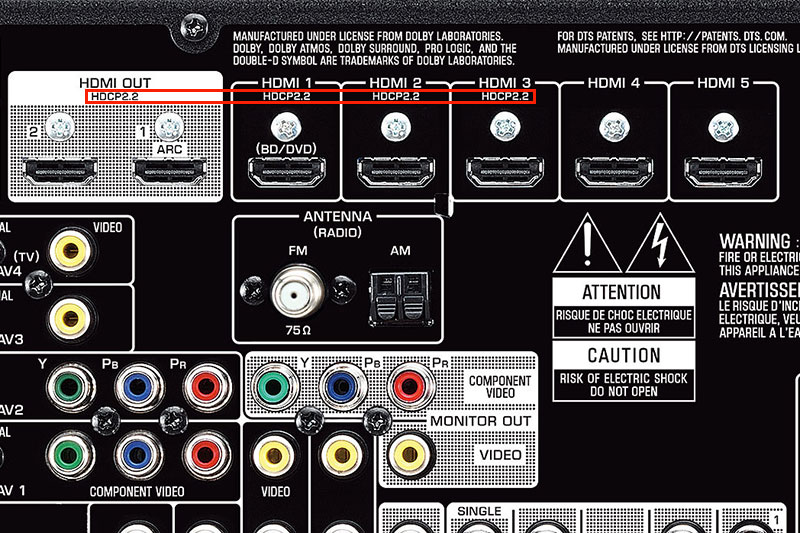What is HDCP?
HDCP which stands for High-bandwidth Digital Content Protection, a copy prevention technology that was developed by Intel and it is licensed by Digital Content Protection LLC, an Intel subsidiary organization, to protect high-value (4K) digital movies and TV shows, from unauthorized copying. HDCP is all about protecting 4K content. If you are happy watching movies in 1080p from your current Blu-ray player, and not planning to upgrade to 4K, then there is no need to be concerned about HDCP 2.2 or 2.3

How does HDCP work
HDCP requires compatibility between products in order to ensure that the digital content being transmitted is protected. It does this by creating encrypted keys between the source, repeaters, and the display (also called the sink). To more understand how this works, let’s take a closer look at each group.
1. SOURCE: This is where the signal starts. It could be a 4K Blu-Ray player, a steaming device (like Fire TV Stick 4K), cable box, gaming console.
2. Repeater: are products that receive the HDCP signal and send it to the sink. Most common products in this category are A/V receivers, Soundbars, switches, splitters, and wireless transmitters.
3. Sink: This is where the source signal goes to display it. Like TVs or projectors.
HDCP affects any component in the signal chain. For example, if you connect a Ultra HD Blu-ray player (source) to your A/V receiver or soundbar (repeater) and then it connects to your TV (sink) the A/V receiver or soundbar which are part of the chain, need to be HDCP 2.2 compliant as well. Any device in the chain that prevents the digital handshake from happening will prevent you from watching 4K content. Now, some content may downgrade from 4K to 1080p while others will show a blank screen or an error message. If you have a smart TV and stream content directly from a built-in app like Netflix or Amazon Prime without any external device or HDMI cable, HDCP does not apply. While HDCP is mostly associated with HDMI, it’s also supported through DisplayPort, DVI, and USB.
HDCP 2.2 – 2.3 and HDMI 2.0 – 2.1: What you need to know
HDCP 2.3 is the latest and most secure version of HDCP. The most common version found these days on TVs, A/V receivers, and Soundbars, is HDCP 2.2. When buying a new TV, A/V receiver, or soundbar, you will see a reference to HDCP 2.2 or 2.3 and HDMI 2.0 or 2.1. Now don’t confuse HDCP with HDMI which is also required for TVs and components to be able to pass 4K content. They do work hand-in-hand but HDMI is backwards-compatible with previous HDMI versions but HDCP 2.2 and 2.3 is not. There are many A/V receivers and soundbars shipping this year that are HDMI 2.0 but are not HDCP 2.2 compliant. In other words, all HDCP 2.2 devices will have HDMI 2.0 but not all HDMI 2.0 will have HDCP 2.2 which might be an issue down the road.
Some TVs, soundbars, and A/V receivers that came with an earlier version of HDCP encryption version may be able to upgrade to HDCP 2.2 or 2.3 via a firmware upgrade as long as when the product was designed, it was designed with some idea about 2.2 or 2.3.
If you are in the market for a new TV, A/V receiver, or soundbar, HDCP 2.2 or 2.3 is something to have in the back of your head. If you want to futureproof your home theater with 4K components, look for devices that support HDMI 2.0 and HDCP 2.2

